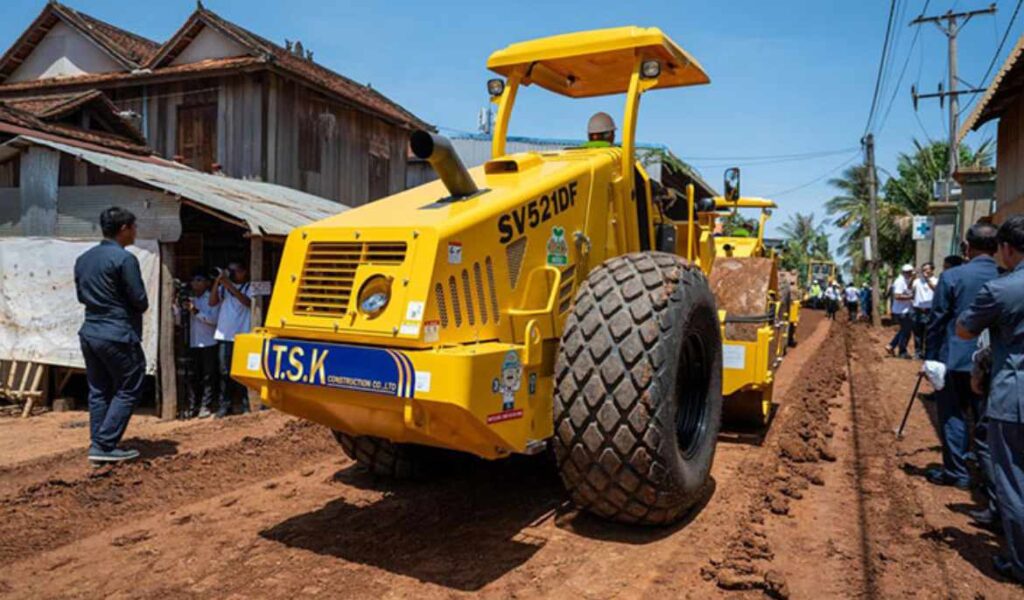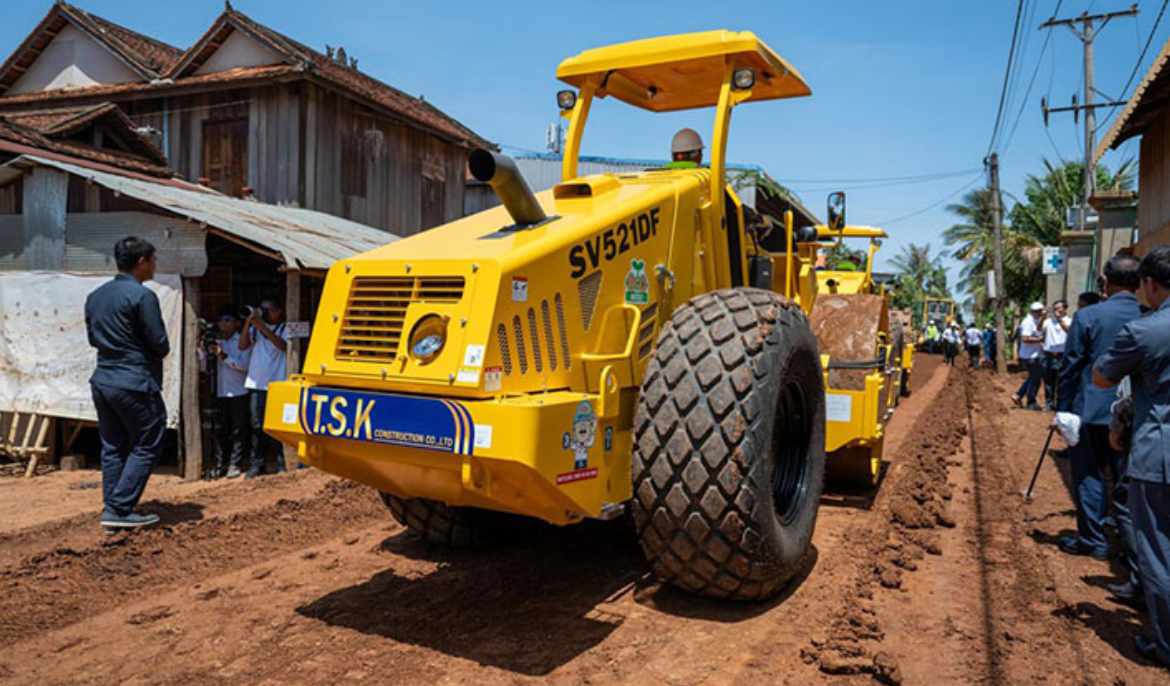Kampong Thom province is poised to become more attractive to both local and foreign investors, particularly in key sectors such as agro-industry, manufacturing, and tourism, once key infrastructure projects are completed, said Vongsey Vissoth, Deputy Prime Minister and Minister in charge of the Office of the Council of Ministers.
Vissoth, who also heads the Royal Government Working Group in Kampong Thom province, made the remarks during the inauguration ceremony for the construction of the double bituminous surface treatment (DBST) and concrete road of 92.9 km in Kampong Thom’s Chong Doung commune, Baray district, on Monday.
The inauguration ceremony was also attended by EU Ambassador to Cambodia Igor Driesmans, French Ambassador to Cambodia Jacques Pellet, Ambassador of the Federal Republic of Germany to Cambodia Stefan Messerer, Senior Minister Thong Khon, Minister of Rural Development Chhay Rithisen, Thor Chetha, Minister of Water Resources and Meteorology, Kampong Thom provincial governor Nuon Pharath among others, according to the statement of the Royal Government Spokesperson’s Unit.
Vissoth said that the project involves constructing 92.9 km of DBST and concrete roads with 12 lines in Kampong Thom is part of the Rural Infrastructure Development for Cambodia Program (RID4CAM). It is being funded through a partnership with the Asia-Europe Investment Fund (EU/AIF), the French Development Agency (AFD), and the German Development Bank (KfW).
This initiative marks a new phase of cooperation for Kampong Thom province and six other target provinces including Siem Reap, Battambang, Preah Vihear, Oddar Meanchey, Banteay Meanchey, and Prey Veng provinces.
The project aligns with the Royal Government’s development cooperation framework and the vision of the Royal Government Working Group in Kampong Thom province to drive provincial development and aims to improve the livelihoods of the people and contribute to the socio-economic development of the province for multiple purposes, he said.
“In addition, upon completion of the construction, Kampong Thom will become increasingly attractive to both local and foreign investors, especially in sectors such as agro-industry, manufacturing, and tourism. As former Prime Minister Hun Sen often said where there is a road, there is hope, and where there is a road, there is development,” said Vissoth.
Chhay Rithisen, Minister of Rural Development, highlighted that the ministry has been implementing a five-year rural development strategic plan, which focuses on the vision of ‘building a prosperous, inclusive, innovative, digital, and resilient Cambodian rural area in terms of economy, society, and culture’.
He added that the strategic plan has five main goals, including ensuring people have a decent standard of living, promoting good health for the people, ensuring people live with dignity, building resilient infrastructure, and promoting good governance.
“Regarding the development of physical infrastructure and rural transportation, the ministry has been working on building more than 50,000 kilometers of rural roads or approximately 74 percent of the country’s total road network. However, only about 15 percent of these roads are DBST and concrete roads, which are resistant to climate change and suitable for use throughout the year,” said Rithisen.
He added that the development of the DBST and concrete roads at this stage is crucial and essential for both the people and the government. These roads serve as a vital economic and social artery, connecting rural areas with urban areas and promoting greater integration between city and rural areas.
It may be recalled that the 12 rural roads to be constructed will span a total length of 92.90 kilometers, passing through 51 villages, 9 communes, and 4 districts in Kampong Thom province. These roads are expected to directly and indirectly benefit 31,731 families.
These 12 roads will significantly enhance connectivity and serve the economic and social interests of the local population by facilitating daily travel, transportation of agricultural products, and access to public services such as administration and healthcare. Additionally, the roads will create job opportunities, save time and money, and make it easier for students to travel to school.



